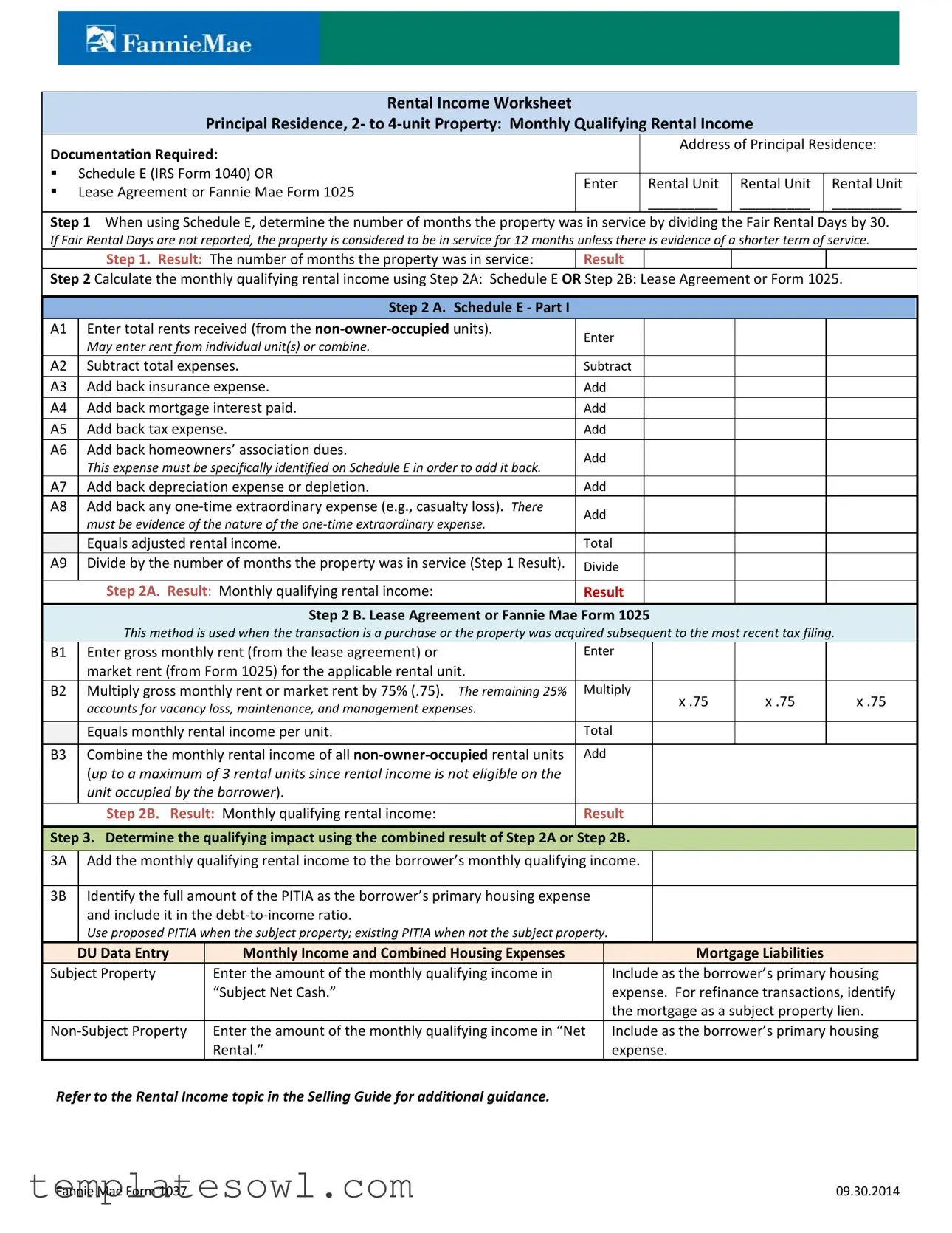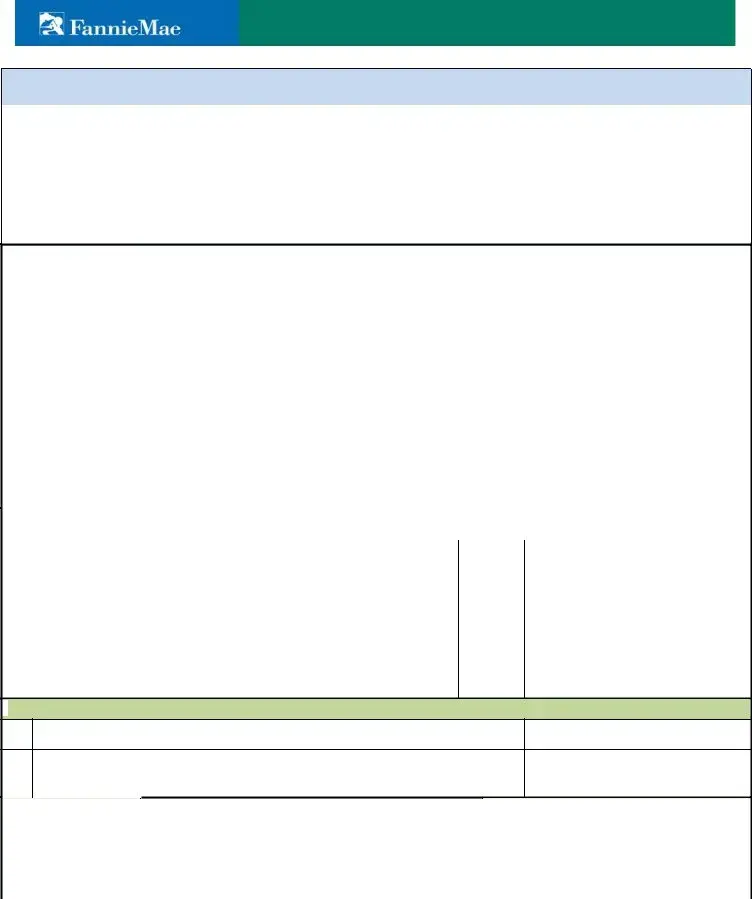What is the Fannie Mae 1037 form used for?
The Fannie Mae 1037 form is primarily a Rental Income Worksheet designed for two to four-unit properties that qualify as principal residences. It assists lenders in calculating the monthly qualifying rental income for these properties. Accurate calculations are essential for assessing borrower eligibility and determining debt-to-income ratios. Without this form, evaluating rental income can be inefficient and less reliable.
What documents are required when completing the Fannie Mae 1037 form?
When filling out the Fannie Mae 1037 form, you will need either Schedule E from the IRS Form 1040 or a Lease Agreement (or Fannie Mae Form 1025). Schedule E includes detailed financial information about the rental property, while a Lease Agreement provides the terms of rental occupancy. These documents help establish the income generated by the property to calculate qualifying rental income accurately.
How is the monthly qualifying rental income calculated?
To calculate monthly qualifying rental income, follow one of two paths: using Schedule E or the Lease Agreement/Fannie Mae Form 1025. If using Schedule E, you first calculate your adjusted rental income by accounting for various expenses and then divide that amount by the number of months the property was in service. If using the Lease Agreement or Form 1025, gross monthly rent is multiplied by 75% to account for potential vacancies and expenses. The calculated figures help determine your monthly rental income.
What should I do if Fair Rental Days are not reported?
If Fair Rental Days are not included in the documentation, assume that the property is in service for 12 months. However, if there is evidence indicating a shorter rental period, adjust the calculation accordingly. This assumption helps ensure that your calculations remain as accurate as possible even when data is incomplete.
Is there a maximum number of rental units that can be included in the calculation?
Yes, when calculating monthly qualifying rental income, you may include rental income from up to three non-owner-occupied rental units. Income from the unit occupied by the borrower cannot be considered. This limitation safeguards lenders against inflated income calculations and provides a more accurate assessment of the borrower’s financial situation.
How does the qualifying impact of rental income affect the borrower’s financial evaluation?
The qualifying impact of rental income directly influences the borrower’s financial evaluation and debt-to-income ratio. To determine the impact, combine the monthly qualifying rental income with the borrower’s monthly qualifying income. Additionally, the full amount of the PITIA (Principal, Interest, Taxes, Insurance, and Association dues) must be included in the borrower’s housing expenses. This process ensures that all financial obligations are accurately accounted for during the lending process.


 Step 3. Determine the qualifying impact using the combined result of Step 2A or Step 2B.
Step 3. Determine the qualifying impact using the combined result of Step 2A or Step 2B.